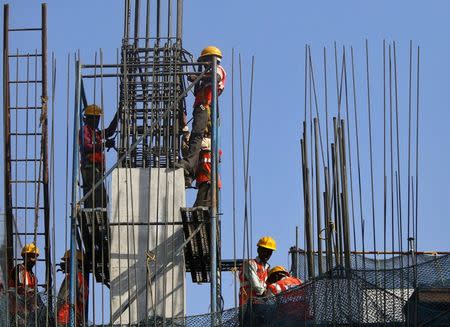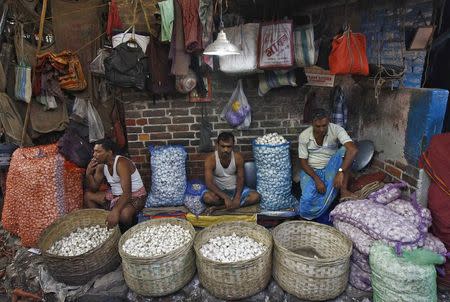India in "sweet spot" of lower deficits, more growth - Economic Survey
By Manoj Kumar and Rajesh Kumar Singh NEW DELHI (Reuters) - India can increase investment to drive economic growth without borrowing more, a key government report said on Friday, in an indication that Finance Minister Arun Jaitley will stick to debt targets in his maiden full-year budget on Saturday. The Economic Survey, the basis for Jaitley's budget for the fiscal year starting April 1, forecast growth of 8.1 percent to 8.5 percent under new calculations that make India the world's most dynamic big economy. The forecast marks an acceleration from growth of 7.4 percent in the current fiscal year. "India has reached a sweet spot and ... there is a scope for Big Bang reforms now," the report said, adding the country was on course to hit double-digit growth rates. Indian stocks rallied, with the benchmark Sensex gaining 1.7 percent, on hopes that Jaitley would deliver a business-friendly budget. At first glance the growth outlook appears impressive. But it follows a big overhaul of India's economic data, which previously showed the economy struggling to recover from its longest growth slowdown in a generation. Other indicators of India's economy are not as rosy as GDP data suggests. Earnings of the country's top 100 companies shrank by 6 percent in the last quarter, private investment and consumer demand are weak and merchandise exports are falling. The author of the report, economic adviser Arvind Subramanian, even said he was "puzzled" by the new GDP figures and played down suggestions that India's $2 trillion economy was on a roll. "India's economy is still recovering, and not surging," Subramanian told a news conference. Prime Minister Narendra Modi won a landslide general election victory last May, capitalising on dissatisfaction among Indians over their economic lot and promising 'better days' of more jobs, investment and growth. The report by Subramanian, a renowned development economist lured away from a Washington think tank by Modi, suggested the economy was now building momentum. That, above all, reflects a near halving in international prices of oil, India's biggest import. As a result, the report predicts the current account deficit will be below 1 percent of GDP in 2015/16, a far cry from a figure of 4.7 percent in 2012/13 that preceded a currency crisis in India. "STATEMENT OF INTENT" Jaitley's first interim budget last July was widely regarded as a flop and, hobbled by weak tax revenues, he has resorted to hurried sales of state assets late in the current fiscal year to make his budget numbers. The government would not overshoot its deficit target of 4.1 percent of gross domestic product in the fiscal year just ending, the report said, reiterating a medium-term target of cutting it to 3 percent of GDP. Shifting spending from subsidies to investment will be the key to keeping the budget on track, giving a further lift to growth as Modi seeks to unblock billions of dollars in stalled investment projects. Inflation is on a declining trend, the report also said, and is likely to undershoot the Reserve Bank of India's target of 6 percent by Jan. 2016 by 0.5 to 1 percentage point. That, said economists, should create room for the RBI to cut interest rates after a first, quarter-point cut in January. Governor Raghuram Rajan's further cuts in the RBI's 7.75 percent policy rate will depend on further fiscal consolidation. "Given where crude is, I don't see why the RBI can't cut rates," said S. Ramasamy, chief investment officer at LIC Nomura Mutual Fund in Mumbai. (Additional reporting by Ratnajyoti Dutta and Nigam Prusty in New Delhi and Neha Dasgupta and Swati Bhat in Mumbai; Writing by Douglas Busvine; Editing by Frank Jack Daniel, Simon Cameron-Moore and Clarence Fernandez)

 Yahoo Finance
Yahoo Finance 

